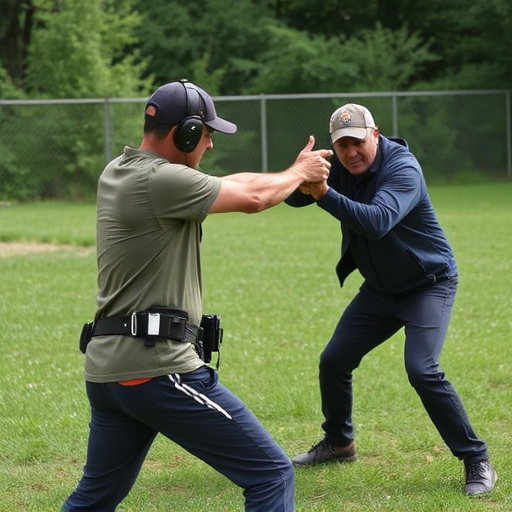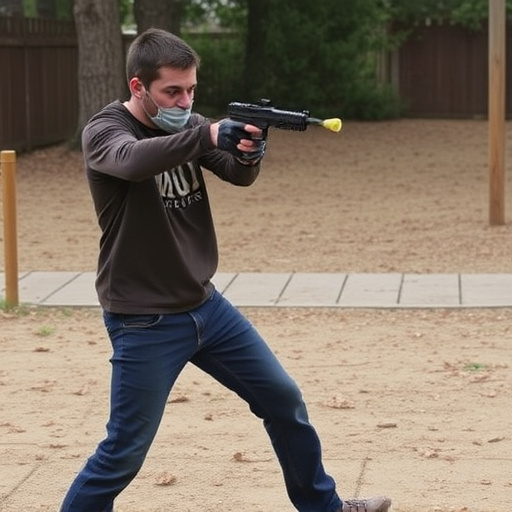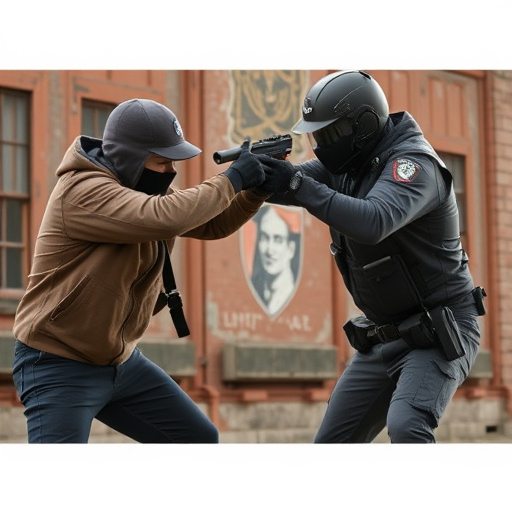Tasers and stun guns, though non-lethal, differ in their incapacitation methods and price ranges. Tasers disrupt muscle control within a 2-3 meter range via electrical pulses, while stun guns generate an electric field delivering a shock upon contact up to 10 meters or more. Stun guns are generally more reliable in adverse weather and vary in price from affordable $50-$100 options to high-end models costing several hundred dollars based on power output, range, and build quality. Understanding the price range for quality stun guns is crucial for making informed decisions that align with individual needs and local regulations.
In today’s world of personal safety, Tasers and stun guns offer crucial tools for self-defense. However, understanding their differences is essential for informed decisions. This article, “Taser vs Stun Gun Differences,” delves into the key distinctions between these devices, focusing on price ranges for quality stun guns and comparing their features, performance, safety, and legal considerations. By exploring these aspects, folks can navigate the market effectively and choose the best protection for their needs.
- Understanding Tasers and Stun Guns: Unveiling the Key Differences
- Price Range for Quality Stun Guns: What You Get for Your Money
- Comparing Features: Performance, Safety, and Legal Considerations
Understanding Tasers and Stun Guns: Unveiling the Key Differences

Tasers and stun guns are both non-lethal weapons designed to incapacitate an opponent, but they operate on different principles and have distinct characteristics. Tasers, formally known as Electronic Control Devices (ECDs), use electrical current to disrupt muscular control, causing temporary paralysis. They fire two thin probes connected to wires that deliver a high-voltage, low-current electric pulse. In contrast, stun guns generate a strong electric field that delivers a painful shock when the target makes contact with the device.
One of the primary differences lies in their effectiveness and range. Tasers generally have a shorter effective range, around 2-3 meters, compared to stun guns, which can reach up to 10 meters or more. Additionally, stun guns are often considered more reliable in certain weather conditions, as they don’t rely on physical contact like tasers do. When it comes to the price range for quality stun guns, there’s variety; budget-friendly options start at around $50-$100, while high-end models designed for professional use can cost several hundred dollars or more. This price variation reflects differences in power output, range, and build quality.
Price Range for Quality Stun Guns: What You Get for Your Money

When considering a stun gun as a personal defense tool, understanding the price range for quality options is essential. The market offers a wide variety of stun guns at different price points, and it’s crucial to know what your money buys in terms of performance, reliability, and safety features. Generally, higher-end stun guns provide advanced functionality, durable construction, and additional accessories, ensuring better value for your investment.
In the premium segment, you can expect stun guns with powerful electrical outputs, smart safety mechanisms, ergonomic designs, and long-lasting batteries. These devices often come with extra features like LED flashlights, compasses, or even GPS tracking. However, prices in this range can vary significantly, starting from around $100 for basic models up to several hundred dollars for advanced, high-performance stun guns with specialized functions. Understanding the price range allows buyers to make informed decisions, ensuring they receive optimal protection within their budget.
Comparing Features: Performance, Safety, and Legal Considerations

When comparing a Taser and a stun gun, both designed to immobilize targets, their performance varies significantly. Tasers use electric current to disrupt muscle control, rendering the target temporarily incapacitated. Stun guns, on the other hand, deliver a high-voltage, low-current electrical pulse aimed at overwhelming the nervous system. In terms of safety, stun guns are generally considered less harmful as they don’t penetrate skin like Tasers, reducing the risk of secondary injuries. However, both devices should be used responsibly and within legal limits to avoid accidental harm.
Legally, the distinction between a Taser and a stun gun can impact their accessibility and use. Some regions allow only law enforcement agencies to possess Tasers due to their potency, while stun guns may be available to civilians under certain conditions. The price range for quality stun guns varies, with factors like power output, voltage, and construction influencing cost. Understanding these differences is crucial when considering the appropriate device based on your needs, safety concerns, and local regulations.
In exploring the distinctions between Tasers and stun guns, it’s evident that both have unique applications and considerations. While Tasers are renowned for their non-lethal force capabilities in law enforcement, stun guns offer a more diverse range of options for personal protection. When considering a purchase, understanding the price range for quality stun guns within your budget is crucial, as it directly impacts performance, safety features, and legal compliance. By weighing these factors, individuals can make informed decisions tailored to their needs and preferences.
